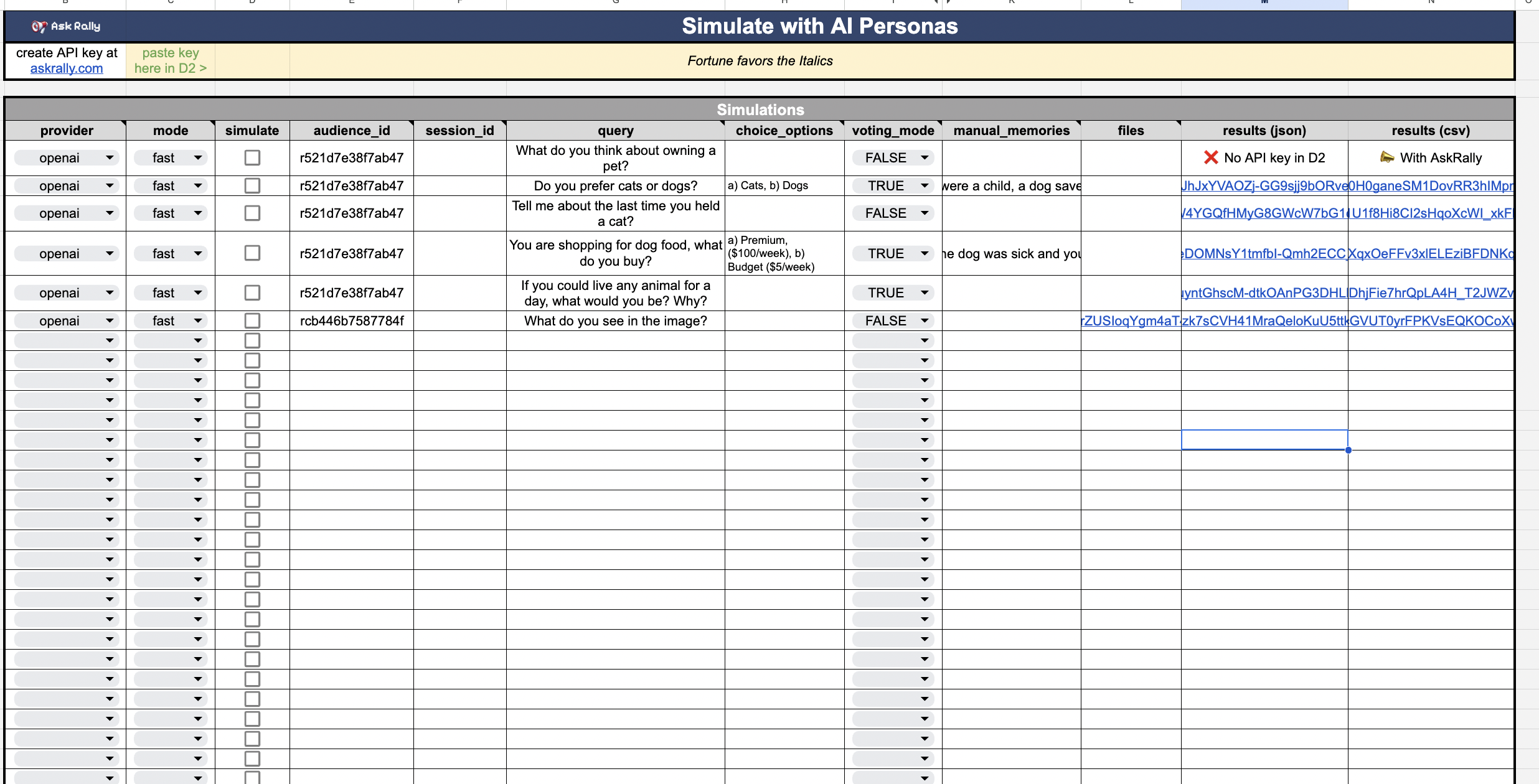
How do we get AskRally to sound so human?
Making AI assistants feel genuinely conversational isn't magic, it's methodical engineering.
Explore our latest articles and insights.
Showing 10-18 of 50 articles

Making AI assistants feel genuinely conversational isn't magic, it's methodical engineering.

Researchers often face the limitation that once a study ends, the insights are frozen in a static report. Study boosting solves this by transforming real survey data into living AI personas, allowing teams to extend research, test new scenarios, and localize messaging with authentic, data-grounded voices.

A strategic agency helped a client avoid costly missteps by using AskRally’s synthetic testing to uncover hidden consumer segments and decision drivers before launch. By replacing assumptions with real pre-launch intelligence, they reshaped pricing, messaging, and media strategy—expanding market reach and improving spend efficiency.

Following last week's behind-the-scenes look at our video reaction simulator, here are a few more examples that highlight how AI personas respond to different types of content. From tech commentary to TikTok clips, these simulated reactions offer a glimpse into the diverse ways people engage with Reels.

Most founders guess their pricing using intuition or competitor benchmarks, unknowingly leaving massive revenue on the table or scaring away customers. Rally uses AI to make professional-grade Van Westendorp pricing analysis accessible for just $50, helping startups price smarter, faster, and without the $5,000+ cost of traditional market research.

Before flying a paraglider 430 kilometers across the Pyrenees, I rehearsed the entire journey in my head using nothing but Google Earth on an iPhone. It changed how I understand preparation forever. That same mindset led me to build a tool that lets you watch how people might react to your message before it matters, turning AI personas into a flight simulator for human empathy.

Optimizing AI models to reduce political bias can also reduce other forms of systemic bias, making responses more aligned with real-world distributions across domains like climate, education, and energy. This cross-domain correction suggests that even targeted optimizations, when properly applied, can generalize to improve overall model realism and reduce misleading consensus in AI outputs.

The AskRally Google Sheet Template lets you survey virtual AI audiences with open‑ended questions, polls, and image tests—all from a single Sheet.

To predict the future, we must track what people actually do and the job they urgently need done.